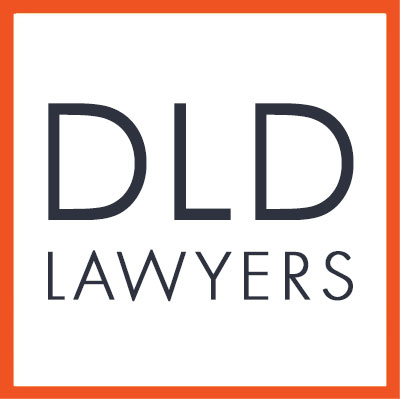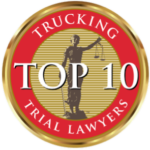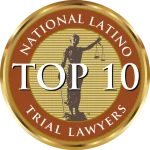The U.S. Senate approved the “Families First Coronavirus Response Act” by a 90-8 vote on March 18, and President Donald Trump signed it into law a few hours later. The bill provides free virus screening as well as paid FMLA and sick leave and enhanced unemployment insurance benefits for people affected by COVID-19.
As passed, the bill, H.R. 6201, provides up to 12 weeks of qualifying family and medical leave when employees can’t work because their minor child’s school or childcare service is closed due to a public health emergency. Workers who have been on the payroll for at least 30 calendar days will be eligible for paid family leave benefits, which will be capped at $200 a day (or $10,000 total) and expire at the end of the year.
Under the bill, many employers will have to provide up to 80 hours of paid-sick-leave benefits for several reasons, including if the employee has been ordered by the government to quarantine or isolate, or has been advised by a health care provider to self-quarantine because of COVID-19.
 Employees could also use paid sick leave when they have symptoms of COVID-19 and are seeking a medical diagnosis, if they are caring for someone who is in quarantine or isolation, or their child’s school or childcare service is closed because of the public health emergency. Paid-sick-leave benefits will be immediately available when the law takes effect and are capped at $511 a day for a worker’s own care and $200 a day when the employee is caring for someone else. This benefit is set to expire at the end of 2020.
Employees could also use paid sick leave when they have symptoms of COVID-19 and are seeking a medical diagnosis, if they are caring for someone who is in quarantine or isolation, or their child’s school or childcare service is closed because of the public health emergency. Paid-sick-leave benefits will be immediately available when the law takes effect and are capped at $511 a day for a worker’s own care and $200 a day when the employee is caring for someone else. This benefit is set to expire at the end of 2020.
Emergency paid sick leave: Small businesses will be required to provide two weeks of paid sick leave to an employee who:
- Has a current diagnosis of COVID–19, or is under quarantine at the instruction of a health care provider, employer, or a local, State, or Federal official.
- Is engaged in caregiving for an individual who has a current diagnosis of COVID–19 or is under quarantine.
- Is engaged in caregiving, because of the COVID–19-related closing of a school or other care facility or care program, for a child or other individual unable to provide self-care.
- This does not apply to businesses with over 500 people and small businesses with under 50 employees may avoid the requirements if they “would jeopardize the viability of the business as a going concern”.
Family medical leave: The bill expands the Family and Medical Leave Act (FMLA) to include leave needed to care for an employee’s child whose school or care provider is closed due to COVID-19. This leave can be used by employees who have been employed by their current employer for at least 30 days. This applies to any private sector employer under 500 employees.
- The first 10 days of FMLA leave may be unpaid — beyond that time employers must compensate employees for the remainder of FMLA-leave taken (up to 10 work weeks) at 2/3 of their regular rate of pay.
- FMLA paid leave is capped at $200 per day and $10,000 per employee total.
Medical certification is a key tool for employers to fight FMLA abuse. Employers may still seek FMLA certifications but offer extended deadlines for completing them. Or waive them for the time being.
If a doctor’s note states that an employee must be off work for 14 days because of flu-like symptoms and can return to work when symptoms subside, an employer could accept the note as a medical certification for the FMLA leave. The employer also could consider the note as equivalent to fitness for duty if the employee affirms that all symptoms have subsided.
Employers should take note that during the pandemic, health care professionals may be too overwhelmed to provide FMLA certifications, and it also may be difficult for employees to get appointments with doctors or other health care providers to verify they are well or no longer contagious. Therefore, discretion and flexibility must be used.
These employers are covered under the FMLA:
- Private-sector employer with 50 or more employees in 20 or more workweeks in the current or preceding calendar year.
- Public agency, including a local, state or federal government agency, regardless of the number of workers it employs.
- Public or private elementary or secondary school, regardless of the number of workers it employs.
In addition, only eligible employees are covered by the FMLA. An eligible employee is one who:
- Works for a covered employer.
- Has worked for the employer for at least 12 months.
- Has at least 1,250 hours of service for the employer during the 12-month period immediately preceding the leave.
- Works at a location where the employer has at least 50 employees within 75 miles.
Covered employers that are required to offer emergency FMLA or paid sick leave during the coronavirus emergency will be eligible for refundable tax credits. Employers with fewer than 50 workers can apply for an exemption from providing paid family and medical leave and paid sick leave if it “would jeopardize the viability of the business.”
Tax credits for paid family and medical leave: The legislation has a refundable tax credit equal to 100% of paid family or medical leave wages paid by the small business each quarter. The credit can be used against the employer’s social security taxes and applies to amounts paid to employees who are sick or quarantined. A smaller credit applies to amounts paid to employees caring for a family member or for a child whose school or place of care has been closed.
Individuals who are self-employed also qualify for refundable credits. The tax credits would offset not just the 6.2% Social Security portion of payroll taxes on affected wages, but also the separate 1.45% Medicare tax. Limits apply. The text of the new law is found online at: https://www.congress.gov/bill/116th-congress/house-bill/6201/text
Please contact DLD Lawyers if you have any questions or concerns about these issues.
Paid Leave under the Families First Coronavirus Response Act




